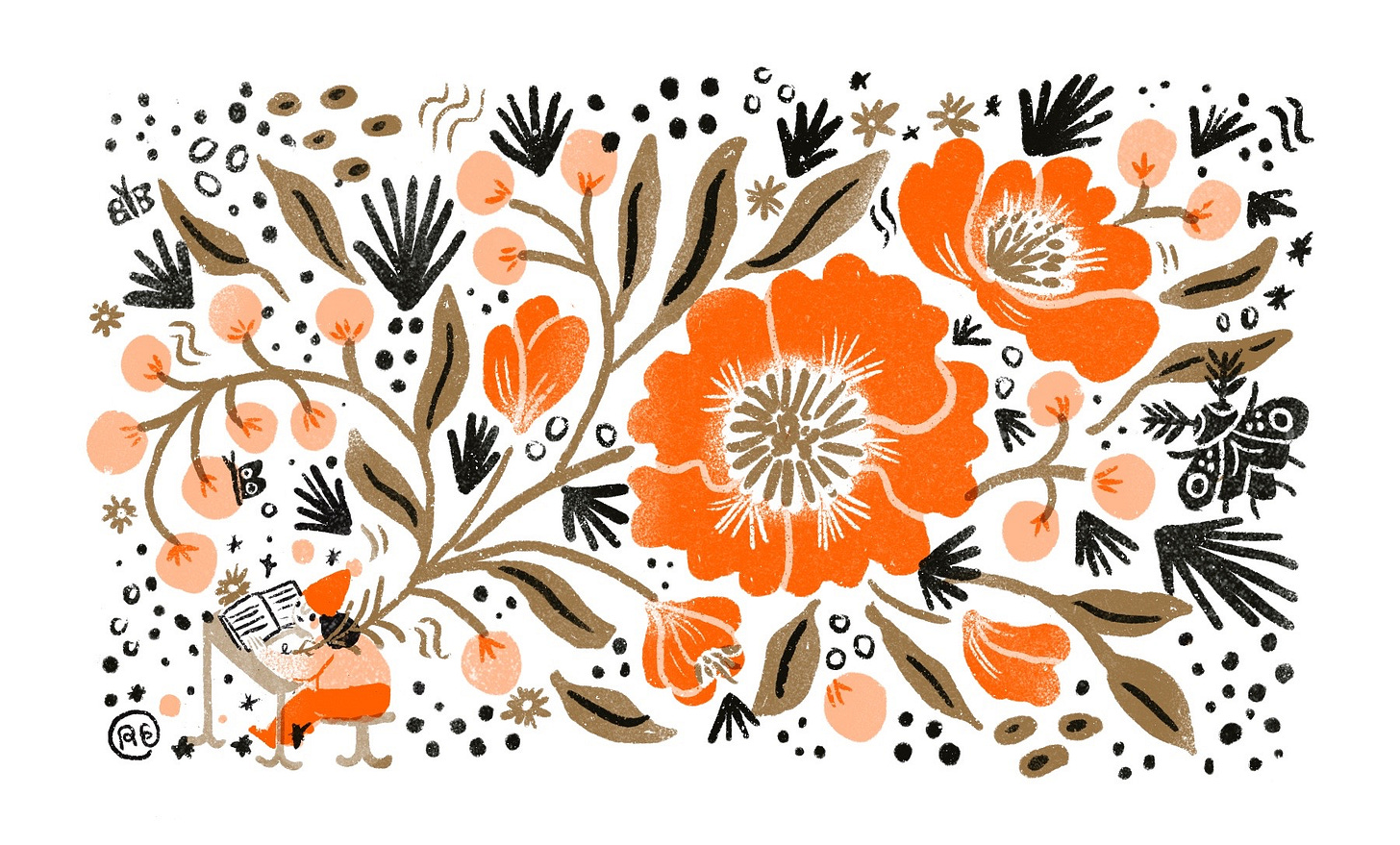03.07.25 Weekly Sabbath Practice: Florilegia & Sparklets
The Surprising Wisdom of Taking Things Out of Context
This week’s Practice: Florilegia & Sparklets
Rachel here.
This week, our Sabbath practice is one of my very favorites: Florilegia and Sparklets.
In Latin, Flora = flower, and Legere = to gather. This old European monastic practice invites you to fill your metaphorical basket with blooming words and phrases—sparklets—that hold special weight or significance for you and then arrange them into an imaginary bouquet, compiling them into a journal, notebook, or compendium called a Florilegium.
To practice Florilegia, you simply need to read a text mindfully and pay attention to what words or phrases “sparkle” to you, and then write them down in your florilegium. Later, you review your collection and explore the new meanings that emerge from their arrangement. Try reading them aloud! One of the most beautiful aspects of this practice is placing one sparklet next to another and observing how their juxtaposition invites fresh insights, like how colors contrast and enhance each other in a painting.
Taking things “out of context” isn’t always a bad thing.
We pick flowers from their context and arrange them alongside others in a vase to make something new. That’s what we do with the sacred practice of Florilegia.
Florilegia How To:
Choose a Text – Select a book, poem, article, or even a conversation.
Read Mindfully – Notice words or phrases that “sparkle” for you.
Collect Sparklets – Write down 1-3 that resonate.
Arrange & Reflect – Place them together in your florilegium (notebook), read them aloud, and notice new meanings.
Share (Optional) – Read sparklets in a group and see what emerges.
Revisit – Return later to see how your insights evolve.
Here are a few links to deepen your practice:
If you’re fans of The BoB, you can join us in our weekly book study during Lent and gather a sparklet for each chapter. I’d love to see people’s florilegia after reading through the entire book!
Vanessa Zoltan’s essay on Sparklets and Jane Eyre
Looking to try these practices out on a secular text? Check out the Harry Potter and the Sacred Text Podcast
If this practice is reminding you of the therapeutic polyvagal theory of glimmers and triggers, Mariko thought so too. Here’s a link!
I first learned of this practice from Vanessa Zoltan on the podcast Harry Potter and the Sacred Text. She and her co-host would regularly read a chapter of The HP Series and each share a sparklet. The discussion that bubbled up from this simple pairing was always so rich. As I was on a big ol’ break from the Bible and anything tied to Christianity at that time, this practice nourished me. It still does.
Practicing Florilegia alone is beautiful—but experiencing it in community is something else entirely.
In my own life, it’s transformed the way I engage with texts, conversations, and even how I remember shared experiences. Today I’m sharing with our wonderful paid subscribers how this practice deepened for me on pilgrimage, how it changed my understanding of sacred words, and how Marri and I put it into practice today with Kaliane Bradley’s The Ministry of Time. Join us below for a demonstration and personal reflections!
Paid subscribers get:
🌿 A guided Florilegia journal prompt
📖 Marri and I’s The Ministry of Time Florilegia demo
💬 Personal reflections on practicing Florilegia in community
✍️🎨A Florilegia Coloring Sheet
📅🕊️Week 01 of the Lent Guide
✨ P.S. Our Lent Guide just dropped! ✨
Even if you don’t observe Lent, this seven-week study is designed for kind and contemplative grownups looking for a richer reading experience and a sense of community (check out our group chat!) It offers a read-through of The Book of Belonging with layered practices—including Sparklets!—formatted for both individual and group study. If you’re curious, this is a great time to join us. Upgrade to access!
Keep reading with a 7-day free trial
Subscribe to The Belonging Workshop to keep reading this post and get 7 days of free access to the full post archives.









